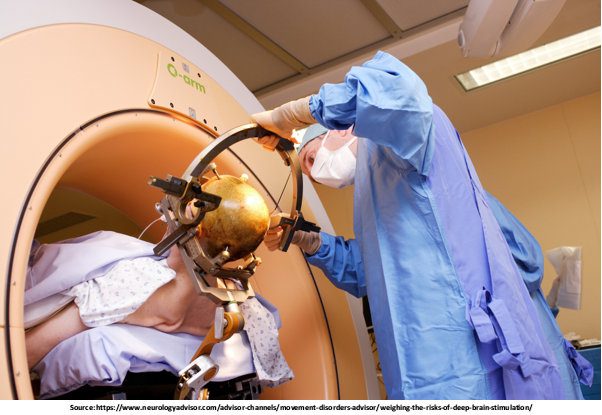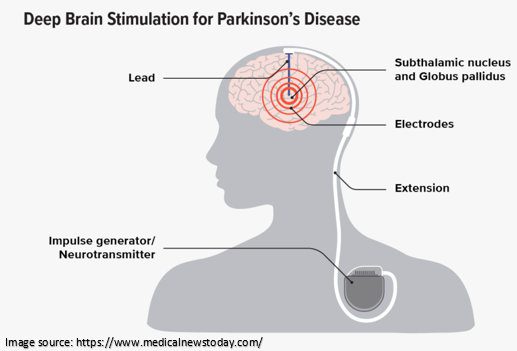When it comes to managing the symptoms of Parkinson’s disease, deep brain stimulation, or DBS, has taken the place of other standard treatments. Although it isn’t a treatment for Parkinson’s disease and can’t stop its underlying progression, it is used to lessen or even eliminate some symptoms.
Dr. Gurneet Singh Sawhney is renowned for performing advanced neurosurgeries , including DBS surgery in Mumbai. Because of his commitment and dedication to his profession, he is considered one of the best neurosurgeon in India. DBS is an updated version of the conventional procedure. The earlier method terminated small brain segments within the thalamus (globus pallidus). During DBS, there is no need for surgical removal of small brain regions.
Dr. Gurneet Singh Sawhney, one of the leading neurosurgeon in Mumbai, India, programs the DBS system to give patients the best symptom control possible. If the symptoms evolve, the programming can be modified.
To get an overview of deep brain stimulation and its pros and cons, read this helpful article.
Now, let’s know,

How does DBS work?
- Electrodes inserted deep within the brain send electrical signals and impulses to particular brain cells. DBS’s exact mechanism is not fully understood.
- PD symptoms like tremors and dyskinesia are thought to be caused by improper electrical communication between brain cells, which is believed to be corrected by the electrical impulses sent by the electrodes.
- A group of medical professionals will decide whether DBS is appropriate for your case. For example, a patient who has had Parkinson’s disease for at least four to five years and experiences breakthrough symptoms while taking levodopa, resulting in a sizable amount of off time, can be a candidate for deep brain stimulation.

- Many conditions, including Parkinson’s disease (PD), dystonia, essential tremors, chronic pain, epilepsy, and Tourette’s syndrome, can be treated with deep brain stimulation surgery.
- The DBS procedure aids in symptom management or reduction. The neurosurgeon inserts a wire known as a “lead” or electrodes into the brain during a deep brain stimulation surgery. It sends signals and electrical impulses to particular brain cells. It has four electrodes that will supply electricity to four different parts of your brain.
Like any procedure, DBS has risks and advantages. Let’s see some of these advantages and disadvantages below.
Pros of Deep Brain Stimulation
- Reduces Adverse Symptoms: DBS often lessens motor signs and symptoms like tremors, slowness, stiffness, and dyskinesia. Additionally, DBS has been demonstrated to help with on/off alterations, enhance the quality of life, and boost general energy levels.
- Retains Nerve Cells: No nerve cells need to be removed for DBS surgery. DBS doesn’t harm specific areas of the brain.
- Reduced Medication: DBS surgery aids in lowering medication requirements and Levodopa side effects, particularly the cost of medications.
- Individualized Care: Doctors and patients with DBS can change the electrodes’ frequency, intensity, and subjective parameters as necessary.
- Independent Life: The patient depends on the other for daily activities due to Parkinson’s disease, tremors, movement disorder, or dyskinesia. DBS surgery enables them to self-manage and controls the symptoms.
Cons of Deep Brain Stimulation
- Surgery-related risks or side effects: If you discuss the risks associated with DBS surgery, you should also discuss the risks of bleeding, stroke, infection, and the build-up of brain fluid. We also know that the brain is a sensitive and complex organ.
- Expensive: Although many insurance providers may pay all or a portion of the DBS, the procedure can be slightly expensive.
- Results Take Time: Finding the ideal ratio of DBS stimulation and medications to manage symptoms will take months. While some signs may go away quickly, finding the right combination to have a long-lasting effect may take some time.
- Invasive Surgery: DBS surgery requires access to deep brain structures through a scalp incision. Patients are also awake during the procedure, which some may find frightening.
- Future Risk Around Specific Electronics: People with DBS can typically be around basic electronics without any issues. Larger, more potent equipment, like a total body coil MRI, might be prohibited after the procedure.
Deep brain stimulation cannot be used to treat the condition. It only aids in symptom and pain relief. As a result, the procedure is deemed successful if the patients’ symptoms lessen but do not entirely disappear. As a backup, some patients might need to take medication.
Tell us if you have had deep brain stimulation in Mumbai and how it worked for you or if you plan to get DBS in the future.
